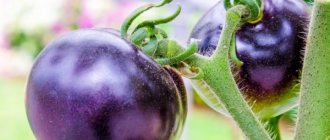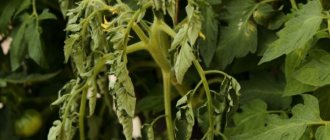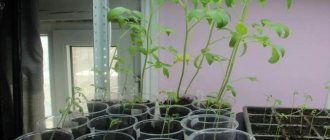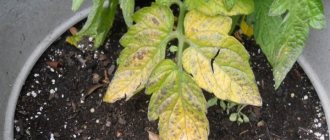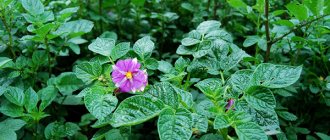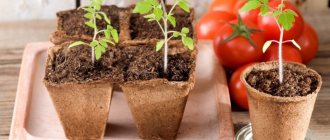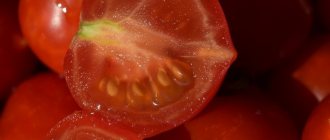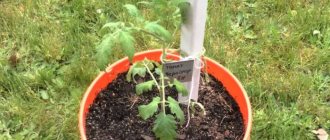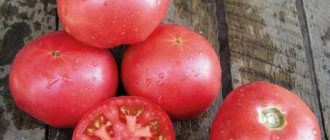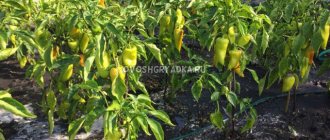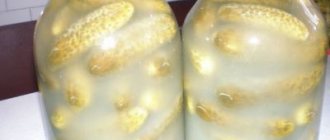Summer without the usual fresh salad is wasted. Summer residents know this especially well. Since early spring they have been breeding seedlings from seeds. Buying planting material is quite expensive, especially if the garden is large. The future harvest depends on the quality of the seedlings, but what to do if tomato seedlings grow poorly. There may be several reasons for this: improper watering, lack of light and heat, lack of minerals. Frail seedlings will not bring a good harvest, so it is necessary to take emergency measures and correct the situation.
Required growing conditions
Seedlings of tomatoes and other vegetable crops require special care. Starting from sowing, it needs sufficient light, warmth and watering. If the seedlings do not grow, it means that there were violations in sowing or care. How to work with planting material correctly, and what needs to be done to avoid problems.
- Poor seedlings are the result of the absence of one of the components of care. The reason may be poor quality of seeds or soil. The choice of planting material is important.
- Hybrid tomatoes are best planted in warm regions. Varietal varieties are suitable for the north.
- Why are tomato seedlings growing slowly? The reason may be in the soil. For successful planting, you need to mix part of the peat with half of the sand. Also, ash must be added to the soil to neutralize the acid. Before planting seedlings, you need to spill the soil with boiling water or a manganese solution.
- Self-collected seeds must also be disinfected. Sowing is done to a depth of 0.5-1 centimeter.
- If tomatoes grow poorly, then you need to pay attention to the temperature regime. At the initial stage, it is necessary to create a greenhouse effect. Temperatures can reach 25-27 degrees.
Very weak tomato seedlings are the result of improper care and failure to comply with basic requirements. A gardener needs to know the basic rules for planting, watering, lighting and fertilizing seedlings.
- The temperature after emergence changes to cooler, 14-16 degrees. Until the root system is strengthened, the above-ground part will grow and develop poorly. When the stems begin to grow, the temperature will have to be raised to 20. This regime does not apply to hybrids; they grow poorly in cool conditions.
- If seedlings develop poorly, then their lighting must be adjusted. Seedlings must receive light for at least 14 hours per day. For late varieties, it is necessary to install a lamp, since they are sown earlier. Without proper lighting, the stems become thin and fragile.
- When the seedlings have sprouted and become stronger, they are watered once a week. But in this matter the approach must be individual. As soon as the top layer of soil dries, you need to water the plants with warm, settled water.
- If the tomatoes are weak and growing poorly, what to do? It is necessary to carry out a pick. This process can begin with the appearance of 3 true leaves. If the seedlings begin to stretch out, then they need to be buried. After picking, the soil is spilled and the pot is removed in the shade for two days.
- After a week, the first feeding is carried out. It is necessary to use a complex of mineral fertilizers. The second feeding is carried out two weeks later.
Before picking, the plants stand side by side, and after that, the pots must be placed further away from each other so that the tomatoes have enough living space. Two weeks before planting, hardening should be carried out by taking the containers outside. You can start with 30 minutes.
Reasons for slower growth
Why tomato seedlings do not grow at home is a pressing question for many owners. To get rid of the problem, you need to find out what its cause is. If tomato seedlings are inactive and look bad, then emergency measures must be taken. What are the reasons for the weakness of seedlings, and what to do if they have slowed down in growth.
- Improper watering can cause problems. If humidification meets the standards, then there may be an unsatisfactory condition of drainage. Without holes in the containers, there is nowhere for excess liquid to go, the soil begins to bloom, and the plant reacts with drooping leaves.
- The culture does not tolerate acidic soil. If tomatoes grow poorly at home, you need to check the composition of the soil. To remove excess acidity, it is recommended to add wood ash.
- Do not apply excessive amounts of fertilizer to the soil. Manure can cause plants to burn, which will slow their growth and cause leaves to turn yellow. An excess of fertilizers has the same detrimental effect as their lack.
- When tomato seedlings do not grow, the cause may be the presence of fungi and infections. If there are pests in the soil, the seedlings will fall out completely. To avoid these troubles, you need to fry the soil and disinfect it and the seeds with a manganese solution.
- If the tomato seedlings have weakened and stopped growing, they may be overcrowded. The owners play it safe and sow the plants very close to each other. In this case, timely picking can help.
- Tomato seedlings grow poorly after picking - there is a high probability of damage to the root system. If pinched incorrectly, an air cushion is formed that prevents the plant from developing.
Picking is done no earlier than two weeks after germination. For replanting, it is best to use peat pots. They allow you not to disturb the root when transferring it to the ground. If tomato seedlings do not grow well after picking, then the procedure was carried out incorrectly. The reason may also be soil contamination or watering costs.
Excess nitrogen nutrition
The reason for the pulling out of tomato seedlings can be excessively nutritious soil generously filled with humus. At the same time, the stems demonstrate rapid growth to the detriment of the root system, but the tissues become loose; internodes lengthen, the budding process is delayed. The situation can be corrected by transplanting young plants into less nutritious soil (turf, with the addition of neutral peat, sand, a small amount of compost and superphosphate). Tomato bushes are sprayed with a solution of phosphorus fertilizer - potassium monophosphate or superphosphate infusion. This stimulates root growth and the formation of inflorescences.
Another source of “excess” nitrogen is excess root and foliar fertilizers. When tomatoes look strong and healthy, they should not be stuffed with nitrogen fertilizers (urea, ammonium nitrate).
Plant diseases
Tomatoes do not grow after picking or have slowed down at the stage of appearance of the first leaves; perhaps they have been exposed to infections or diseases characteristic of the species. Every disease has its own treatment method. But not all diseases affecting the plant can be eliminated. Sometimes you have to sacrifice diseased sprouts to protect healthy ones. Why tomato seedlings grow poorly, we find out the reasons and methods of treatment.
- Fusarium infects the soil with a fungus. It infects the plant through soil or planting material. The tomato begins to wither and grows poorly. The top gradually turns yellow. Plant growth slows down and sometimes stops completely. To avoid infection of all roots, it is necessary to eliminate the diseased plant along with the soil. Disinfecting the soil with drugs such as Fitolavin and Fitosporin will also help.
- One of the most dangerous fungi is “Blackleg”. The trunk of tomato seedlings becomes thinner at soil level, it darkens and the plant dies. The culprit of the disease is a pathogenic bacterium. At the initial stage of the disease, you can spill the soil with a weak solution of manganese. When tomato and pepper seedlings are completely infected, they cannot be saved. Gardeners recommend throwing out diseased plants without regret.
- Tomato seedlings do not develop and fall out if the greenhouse is affected by black rot. The disease appears due to high humidity and low temperatures. Tomato seedlings do not grow, wither, turn yellow and die. It is impossible to help such roots. It is necessary to immediately throw out infected plants, and replant healthy ones in another soil. In this case, picking helps.
The seedlings on the window have stopped growing, which means emergency measures need to be taken. Often, diseases are cured by disinfection with manganese or by planting them in separate containers and replacing the soil. Initially, to avoid infections, you need to carefully select seeds. Self-collected planting material must be soaked in a manganese solution for 20 minutes.
Stimulant abuse
Sometimes tomato seedlings experience growth and development abnormalities when vegetable growers get carried away with using various stimulants without following the instructions for dosage and frequency of plant treatment. This applies to such drugs as “Baikal”, “Shine”, “Agrofil” “NV-101”, “Epin Extra”, humates, “Atlet”, etc. Folk remedies - yeast, urine, etc. - can also cause harm to tomatoes. herbal infusions and other fancy “chemical-free” recipes.
See also Eagle Beak Tomato: characteristics of the variety and growing features
It should be remembered that an excess of stimulants for tomatoes is more harmful than their absence. “Miracle” folk remedies should be treated with a reasonable degree of skepticism and caution, and store-bought drugs should be used strictly according to the instructions and only when necessary.
Accelerating growth
Tomato seedlings are not developing, and planting time is running out. Emergency measures must be taken. There are rules that must be followed to avoid this problem.
- If tomato seedlings have stopped growing, the reason may lie in the wrong place. It should be warm and well lit.
- The soil is pre-roasted and watered with a solution of potassium permanganate. It should contain humus, peat and sand.
- Tomato and pepper seedlings do not develop well, which means it is necessary to regulate watering. You can use settled and warm water.
- In very hot conditions, additional spraying is required. This method will also help if the seedlings are very close to heating devices.
- Watering is important at all stages of care. After picking, tomato seedlings take root very poorly and do not grow, which means the soil was not sufficiently moistened and the roots were damaged. It is necessary to spray with activators. "Epin" is suitable for these purposes.
- After picking, the tomatoes weakened and stopped growing, probably the soil was not pressed sufficiently to the root. There is no need to compact the soil too much. It is enough to press the soil near the stem with your fingers.
- Folk remedies for strengthening plants recommend that if tomatoes develop poorly, water them with a mixture of milk and water. This will help prevent the occurrence of many diseases.
Knowing the reason why tomato seedlings do not grow, you can avoid their eventual loss. If measures are taken in time, the seedlings can be easily rehabilitated.
Yellowing of seedlings
The question arose why the tomatoes do not grow and the desired shade of green does not appear, the foliage turns yellow and curls. There are several reasons for these symptoms:
- there is an excess of fertilizers in the soil, it is too acidic or the root system cannot breathe due to excessive density;
- there is a lot of moisture, but there is not enough airiness in the soil, it is covered with a crust;
- Yellowing of the tips of the foliage indicates insufficient potassium content.
Seedlings of hybrid tomatoes grow poorly at home, what to feed and what to change in care. Potassium-nitrogen mixtures should be used as fertilizer. Also, each individual case requires an individual approach. If tomatoes develop poorly and turn yellow, then a number of measures should be taken:
- damaged lower leaves are removed, it is necessary to adjust watering and temperature conditions;
- if the crown becomes spotted and begins to fall off, then the plant does not have enough nitrogen, copper, sulfur or iron - a complex fertilizer is required;
- The cause of yellowish tomatoes at an early stage of development can be fusarium or blackleg;
- Watering with cold water causes the death of plants within a few hours.
Why tomato seedlings bring grief to owners. There are many reasons for this, but the main thing is failure to properly care for the plants. If you water, light and feed correctly, sow and plant, then such problems will not arise.
Why tomatoes don't grow well
Typically, slower growth of tomatoes is associated with nitrogen deficiency. If there is a shortage of this basic nutrient, the growth of apical and lateral shoots stops, and young leaves begin to turn yellow. If there are not enough sulfur compounds, the stem becomes thinner and hardens, remaining dwarf.
For tomatoes grown in a greenhouse, it is important to maintain the required temperature and humidity, as well as the feeding regime. The slowdown in the growth of tomatoes in a greenhouse occurs due to the following reasons:
- too high or, conversely, too low air temperature in the greenhouse;
- increased or insufficient air humidity;
- high or low soil moisture;
- unbalanced composition of fertilizers.
Eliminating the first three reasons is quite easy. In particular, during the pollination period, the air temperature in the greenhouse should be between 24-28°C. In cloudy weather it should not exceed 20-22°C. At night the air temperature should not fall below 18°C. Accordingly, at an air temperature of about 32°C, pollen loses its quality, and at an air temperature below 15°C, pollination stops altogether.
The plant needs to be provided with intensive nutrition in mid-summer, during the period of fruit formation.
The optimal level of air humidity that allows the formation of ovaries is 65%. However, the greenhouse should be ventilated regularly. Soil humidity should be in the range of 70-75%, so it is necessary to provide the plants with regular watering with settled water at a temperature of 24-26°C.
The situation is more complicated with fertilizing, although they are often the main reasons for the slowdown in the growth of tomatoes.
Poor pepper growth
To grow pepper properly, you need to make every effort, as the culture is considered finicky. Buying seedlings is not a cheap pleasure, so you have to do it yourself. In each case, the approach must be individual. There are several reasons why pepper seedlings grow poorly and their development slows down:
- You cannot use the same soil every year, it is quickly depleted;
- varietal seeds are of higher quality than hybrid ones and have better germination;
- it is necessary to strictly adhere to sowing dates so that the seedlings do not outgrow and have time to gain strength for replanting;
- too high a temperature leads to drying out of the soil;
- the need for backlighting for ten hours a day to prevent stretching;
- before transplanting to the garden bed, you cannot do more than two fertilizings; an excess of minerals is not beneficial for the plants;
- Moderate watering is required to prevent rotting of the root system.
To root seedlings that do not immediately produce the required growth rate, spraying with Kornevin will be required. If the seedlings are lethargic, a complex fertilizer containing nitrogen will help. Drafts and cold can lead to slower growth; water for irrigation should also be warm. Fertilizing with saltpeter and treating with peroxide solution also brings good results. If the owner did not plant the seedlings on time, they will slow down their growth. Only high-quality care will help to avoid problems with seedlings of vegetable crops.
